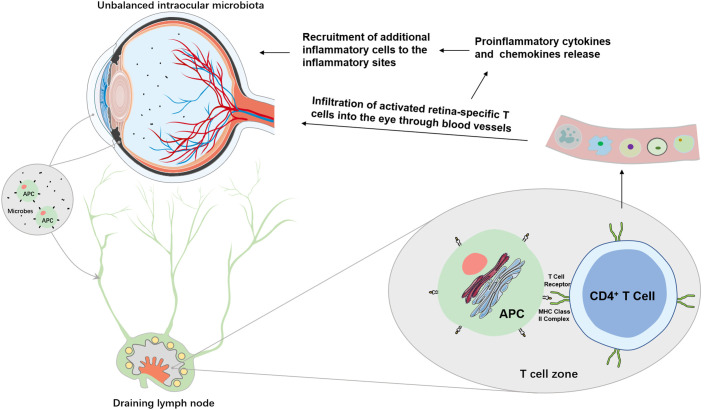Figure 2.
Potential mechanisms of intraocular microbiome-mediated intraocular inflammation. Unbalanced intraocular microbiota can lead to overgrowth of pathogenic microbes which are surveyed by resident ocular APCs, such as ocular DCs. Immature APCs take up either the microbe as a whole or the microbial antigens in the eye to become mature. Through afferent lymphatic vessels, mature APCs migrate to the closest draining lymph nodes where they are recognized by CD4+ T cells. Activated retina-specific T cells migrate into the eyes to secret proinflammatory cytokines and chemokines which may disrupt the blood-retina barrier and recruit additional inflammatory cells and mediators to the eyes to cause intraocular inflammation.

